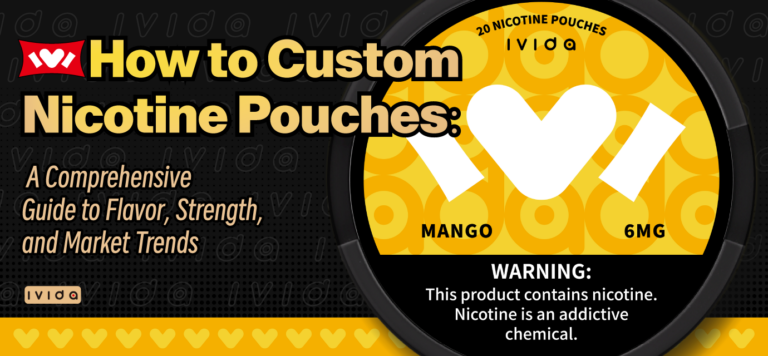Demystifying Nicotine Pouches: What’s in Them and Why They Matter

A nicotine pouch is a diminutive yet significant invention in the realm of nicotine consumption. It’s a tiny bag housing not only the highly addictive substance, nicotine but also several other constituents. Notably, it does not contain tobacco leaf. These pouches are designed for oral use, with users placing one snugly between their lips and gums for up to an hour. It’s crucial to note that they neither swallow it nor smoke it.
Manufacturers of nicotine pouches have been promoting their products as a relatively safer alternative to the age-old practices of smoking and dipping. But what exactly lies within these seemingly simple pouches?
The Intricate Composition of Nicotine Pouches
Nicotine pouches are a complex blend of different compounds, each playing a pivotal role in shaping the user’s overall experience in terms of flavor, strength, and intensity. Let’s take a closer look at the ingredients that go into making these pouches:
- Flavorings:
IVIDA, a renowned brand in this domain, offers a plethora of flavors such as Cool Mint, Spearmint, and Blue Razz. The choice of flavor varies depending on the specific type of pouch being crafted. These flavorings are all-natural food-grade additives, ensuring they are safe for use in combination with nicotine. As soon as the pouch makes contact with the mouth, the flavorings are released, imparting a refreshing and revitalizing sensation. - Nicotine:
Nicotine is naturally present in tobacco plants, which belong to the same family as potato plants. In nicotine pouches, the salivary glands in the gums facilitate the entry of nicotine into the bloodstream, where it exerts its stimulating effect. Nicotine salt is the form utilized, and it’s important to clarify that it’s not the common table salt we use in cooking. Derived from tobacco leaves, nicotine salts are added to the nicotine liquid to prolong the effect. - pH Modifiers:
The pH level of a solution determines its acidity or alkalinity and has a direct bearing on how efficiently the nicotine in the pouch is absorbed. A higher pH correlates with increased absorption, while a lower pH leads to reduced uptake. Manufacturers incorporate pH adjusters, which are typically minerals also used in baked goods. Despite their seemingly complex function, they are chemically straightforward. - Stabilizers:
Powdered vegetable glycerine and propylene glycol serve as stabilizers in the production of nicotine pouches. Their presence is indispensable as they enhance the flavor profile, keep the pouch moist and consistent, preventing it from drying out. Additionally, they act as binding agents, ensuring all the components stay together. - Fillers:
Before the addition of fillers, nicotine packets are rather compact. Fillers are incorporated to enhance the comfort and convenience during use, especially in the lip area. Rest assured, these fillers are safe for consumption, made from gum bases and plant-based fibers. - Water:
Water is added to maintain the pouch’s hydration, ensuring it remains soft and gentle on the lip. This simple yet essential ingredient contributes to the overall user experience.
Conclusion: The Promise and Potential of Nicotine Pouches
Nicotine pouches have emerged as a marketed alternative to the potentially hazardous smoking habit. By allowing nicotine to permeate the soft tissues of the mouth without the need for tobacco leaves, they offer a stimulating effect. The flavorings, stabilizers, fillers, and pH adjusters work in harmony to create a unique and consistent user experience. As the demand for safer nicotine alternatives grows, understanding the composition and benefits of these pouches becomes even more crucial. With continued research and innovation, nicotine pouches could potentially play a significant role in reshaping the way people consume nicotine, offering a more controlled and less harmful option. However, it’s equally important to approach their use with awareness and responsibility, given the addictive nature of nicotine.






-qwpax3rd2nto0i9lm3wb0nde9r42qenn9so2lk7sb4.png)
Your passion is infectious. It’s hard not to get excited about the things you write about.